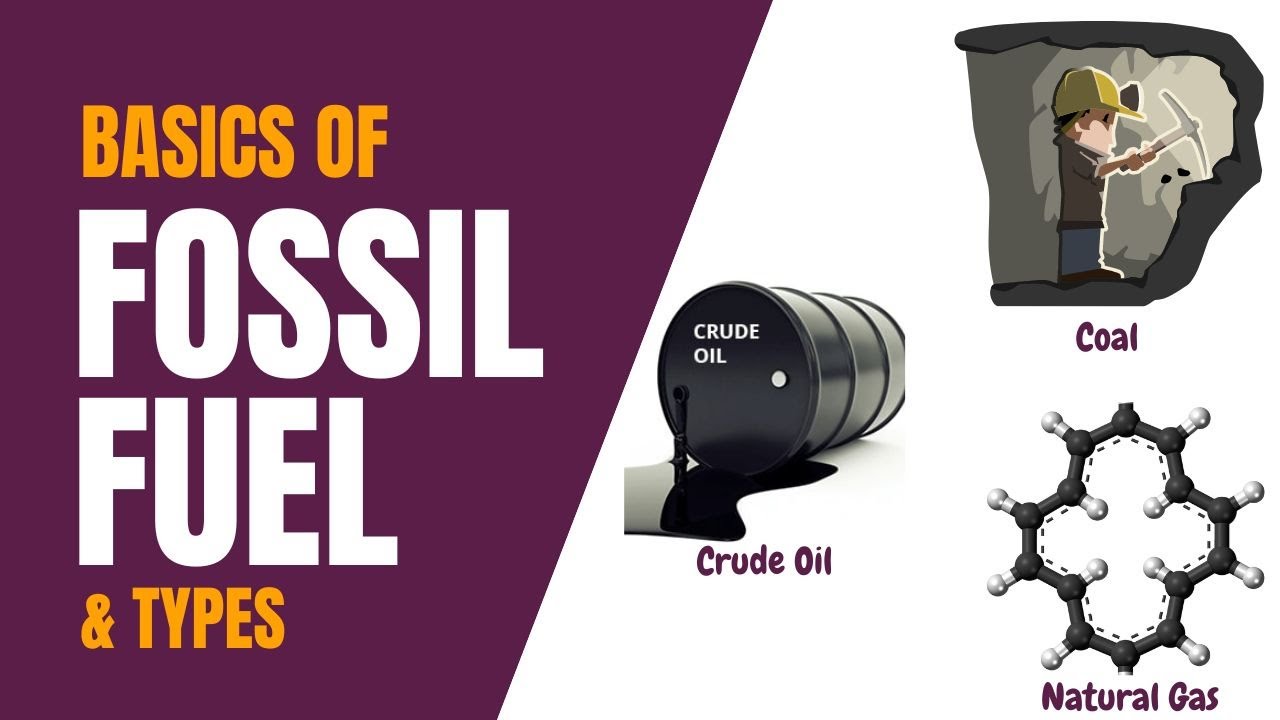GCSE Chemistry - Crude Oil and Fractional Distillation #53
Summary
TLDRThis video explores the fractional distillation process of crude oil, a fossil fuel derived from ancient organic matter. It explains how different hydrocarbons within crude oil are separated based on their boiling points, yielding products like bitumen for road surfacing, heavy fuel oil, and lighter fuels such as diesel, petrol, and kerosene. The video also touches on the potential for 'cracking' longer-chain hydrocarbons and the use of petrochemicals as raw materials for various industries, highlighting the importance of this process in our daily lives.
Takeaways
- 🌿 Crude oil is a fossil fuel derived from the remains of dead plants and animals, particularly plankton, that have been subjected to high pressures and temperatures underground for millions of years.
- 🚧 Crude oil is a complex mixture of hydrocarbons, predominantly alkanes, which are compounds consisting of hydrogen and carbon.
- 💧 The formation of crude oil is a lengthy process, making it a finite and non-renewable resource.
- 🔩 Fractional distillation is the primary method used to separate the various hydrocarbons in crude oil due to their differing boiling points.
- 🔥 The distillation process involves heating the crude oil to a gaseous state and then passing it through a fractionating column where it is separated based on boiling points.
- ⛽ The longest-chain hydrocarbons, with the highest boiling points, condense first and are used for products like bitumen for road surfaces and heavy fuel oil.
- 🚗 Shorter-chain hydrocarbons with lower boiling points are used as fuels for vehicles, such as diesel, petrol, and kerosene for jet engines.
- 🔥 Hydrocarbons with very low boiling points, like LPG (propane and butane), remain gaseous throughout the distillation process and are used for cooking and heating.
- 🔨 Longer-chain hydrocarbons that are poor as fuels can be further processed through cracking to produce smaller, more useful hydrocarbons.
- 🏭 Petrochemicals, derived from crude oil, serve as raw materials for various industries, including the production of solvents, lubricants, polymers, and detergents.
Q & A
What is crude oil and where does it come from?
-Crude oil is a fossil fuel derived from the remains of dead plants and animals, particularly plankton, that died millions of years ago and were buried in mud. It is formed naturally under high pressure and temperature conditions over millions of years.
Why is crude oil considered a non-renewable resource?
-Crude oil is considered non-renewable because it takes millions of years to form from organic biomass, and if extracted and used at the current rate, it will eventually run out.
How does the fractional distillation process separate the components of crude oil?
-Fractional distillation separates the components of crude oil by heating it and taking advantage of the different boiling points of the compounds. It involves heating the crude oil into a gas, then passing it through a fractionating column where it cools and condenses at different levels based on its boiling point.
What are the first compounds to condense and drain out of the fractionating column during distillation?
-The first compounds to condense and drain out are the hydrocarbons with the longest chains, which have the highest boiling points. These include substances like bitumen used for road surfacing and heavy fuel oil.
What are the uses of the longer-chain hydrocarbons that condense early in the distillation process?
-Longer-chain hydrocarbons that condense early are used for making bitumen for road surfaces, heavy fuel oil for heating, and can be further processed into lubricating oils.
Which hydrocarbons have lower boiling points and thus stay in the gaseous state longer during distillation?
-Shorter chain hydrocarbons have lower boiling points and remain in the gaseous state longer as they rise up the fractionating column. These include fuels like diesel, petrol, and kerosene.
What products can be obtained from the shorter chain hydrocarbons in crude oil?
-Shorter chain hydrocarbons yield products like diesel for vehicles, petrol for cars, and kerosene for jet engines after distillation.
What happens to the hydrocarbons that remain as gas throughout the distillation process?
-Hydrocarbons with very short chains and low boiling points, such as propane and butane in liquefied petroleum gas (LPG), remain as gas throughout the distillation process.
How are the hydrocarbons at the top of the fractionating column different from those at the bottom?
-Hydrocarbons at the top of the column are shorter chains and more flammable, making them ideal for fuels, while those at the bottom are longer chains, often poor as fuels, and are used for other purposes or processed further.
What is the term for the substances derived from crude oil used as raw materials in the petrochemical industry?
-The substances derived from crude oil used as raw materials in the petrochemical industry are called petrochemicals.
What other uses do petrochemicals have besides being fuels?
-Besides being used as fuels, petrochemicals serve as feedstock for making solvents, lubricants, polymers, and detergents in the petrochemical industry.
Outlines

このセクションは有料ユーザー限定です。 アクセスするには、アップグレードをお願いします。
今すぐアップグレードMindmap

このセクションは有料ユーザー限定です。 アクセスするには、アップグレードをお願いします。
今すぐアップグレードKeywords

このセクションは有料ユーザー限定です。 アクセスするには、アップグレードをお願いします。
今すぐアップグレードHighlights

このセクションは有料ユーザー限定です。 アクセスするには、アップグレードをお願いします。
今すぐアップグレードTranscripts

このセクションは有料ユーザー限定です。 アクセスするには、アップグレードをお願いします。
今すぐアップグレード関連動画をさらに表示

Minyak Bumi dan Gas disertai Animasi Terbentuknya dan Proses Destilasi Minyak Bumi - Kimia XI

AQA 3.2 Alkanes REVISION

Fossil Fuel Basics and Types | Simple Science

Destilasi Fraksinasi Minyak Bumi

► Lo que debes saber del Petróleo y sus Procesos Básicos ► Exploración y producción de hidrocarburos

Marine Fuel Properties
5.0 / 5 (0 votes)
